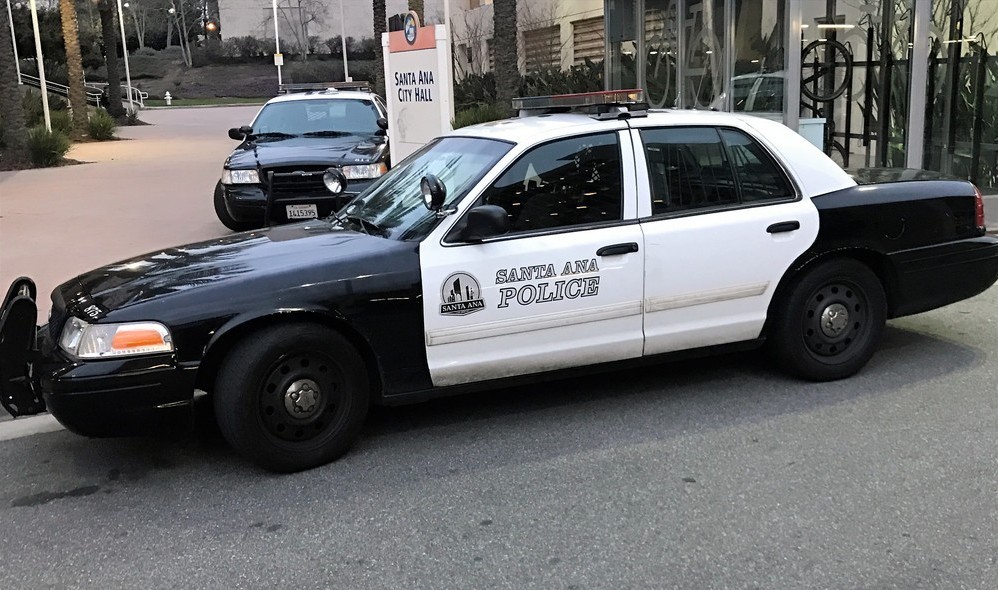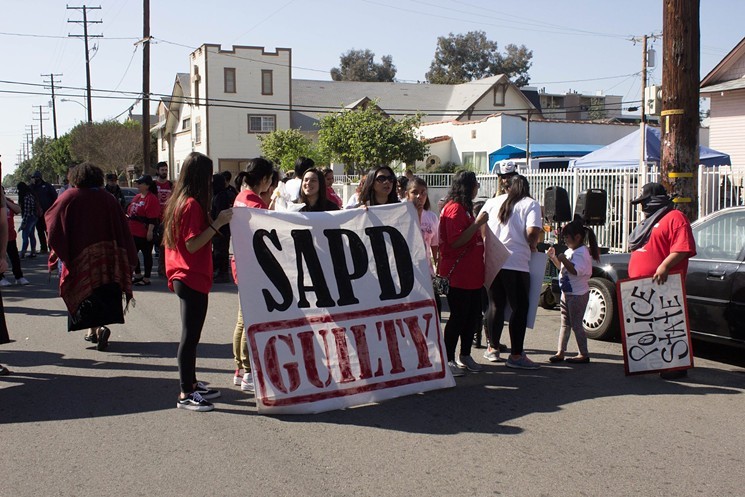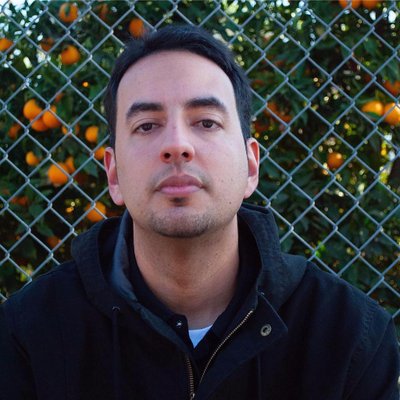 Long before Santa Ana council members started discussing oversight of its police department this year, a black civil rights group pressed for the same reform in the wake of the Watts Riots. The Orange County Congress of Racial Equality (CORE) listed five demands during a Santa Ana city council meeting in September 1965, including the creation of a civilian review board.
Long before Santa Ana council members started discussing oversight of its police department this year, a black civil rights group pressed for the same reform in the wake of the Watts Riots. The Orange County Congress of Racial Equality (CORE) listed five demands during a Santa Ana city council meeting in September 1965, including the creation of a civilian review board.
Lawrence Howard, a Costa Mesa member of CORE, read chairman Oree Dyes’ letter on his behalf that called for the “establishment of some type of mechanism, controlled by civilians, to investigate and process charges of police brutality lodged by citizens of the community.” Council members shrugged off the group’s proposals that also included the hiring of black police officers and community control of President Lyndon B. Johnson’s War on Poverty federal funds spent in the city.
“I’m sure an answer will be given to CORE at the proper time,” Mayor Pro Tem Tom McMicheal was quoted as saying in The Register. “I haven’t studied the proposals and would not comment on them at this time.” The OC chapter of the National Association for the Advancement of Colored People (NAACP) made virtually the same demands of council two years prior.
Santa Ana police counted 150 officers in its ranks at the time—all of them white men. Police Chief Edward J. Allen noted efforts to outreach to the black community on the city’s southwest side, but not before dabbling in a little racism for the press. “We aren’t about to lower our standards just to permit Negroes to join the police force,” Chief Allen said. And this came from Santa Ana’s top cop who was actually to the left of the John Birch Society faction in his ranks that wanted him ousted.
Dyes’ letter to city council offered a cautionary tale. “We must remember the outrage of unemployment, restricted housing, segregated schooling, police harassment, and the hopelessness that pervades the ghetto remains a prelude to the rifle and the gasoline bomb,” it read. With CORE’s calls unheeded, the ghettos didn’t rise up in violent rebellion, but tensions between African-Americans and police reached a boiling point just four years later. When officer Nelson Sasscer was shot and killed on the night of June 4, 1969, his colleagues on the force responded with a heavy hand in the black community, one that angered Santa Ana’s small but vocal African-American leaders.
 Hundreds of black and Mexican youth rioted that summer over a racial slur hurled at the now-gone Broadway Theater. Police eventually arrested Arthur League, a member of the Black Panther Party’s Santa Ana branch, but not before the African-American community complained of harassment and intimidation. The outcry resulted in calls that eventually led to the creation of the Orange County Human Relations Commission.
Hundreds of black and Mexican youth rioted that summer over a racial slur hurled at the now-gone Broadway Theater. Police eventually arrested Arthur League, a member of the Black Panther Party’s Santa Ana branch, but not before the African-American community complained of harassment and intimidation. The outcry resulted in calls that eventually led to the creation of the Orange County Human Relations Commission.
Fast-forward five decades and a couple of city council discussions later, Santa Ana is still without a civilian review board. The force is more diverse than in ’65, but still faces heavy scrutiny. The discussion around police oversight started anew after 2016 ended with costly settlements in officer-involved shooting cases, with two lawsuits accounting for $6.8 million alone. “I would like to request our city attorney to work with our chief of police to look at the best practices across this country in regards to citizens review versus independent review boards,” councilwoman Michele Martinez said at the March 7 city council meeting this year. “This city has functioned and has ran without accountability.”
And that’s where things still stand today. “The City Attorney’s Office is researching potential legal impacts of the various models and will seek additional staff input prior to presenting the item to the City Council,” says city spokeswoman Alma Flores. “No date has been identified at this time.” But bureaucrats aren’t the only ones organizing on the police oversight front. Groups like the American Civil Liberties Union of Southern California, Resilience OC and Chicanos Unidos have sent a letter to council outlining eight principles for a strong civilian review board—including independent membership, subpoena powers, and secure funding—that echo earlier activist efforts decades ago.
“Police oversight is as critical now as it was then because clearly not much has changed,” says Gaby Hernandez, a Chicano Unidos organizer. “Even when they’ve diversified their staff, the Santa Ana Police Department continues the same culture—abuse of power.”

Gabriel San Román is from Anacrime. He’s a journalist, subversive historian and the tallest Mexican in OC. He also once stood falsely accused of writing articles on Turkish politics in exchange for free food from DönerG’s!

